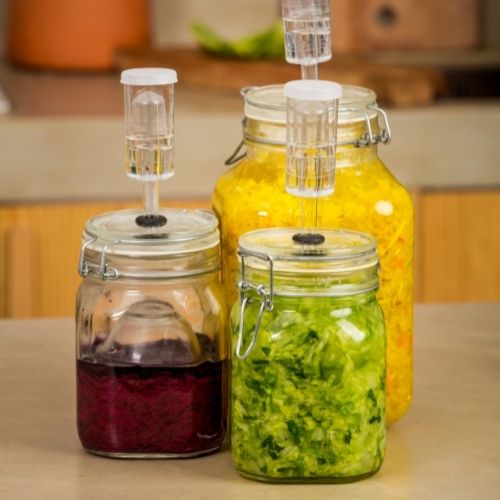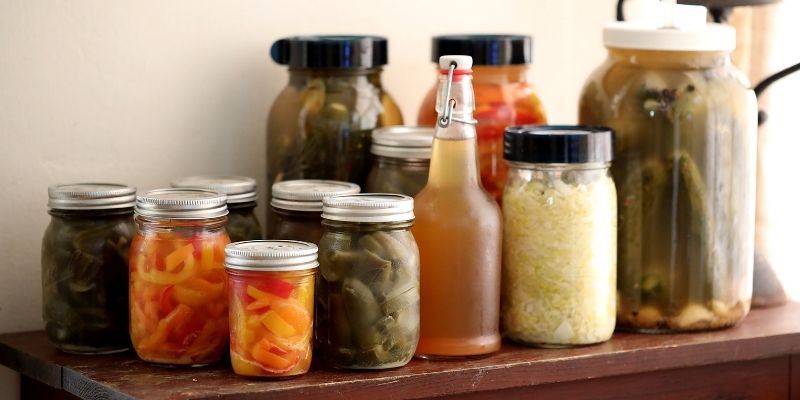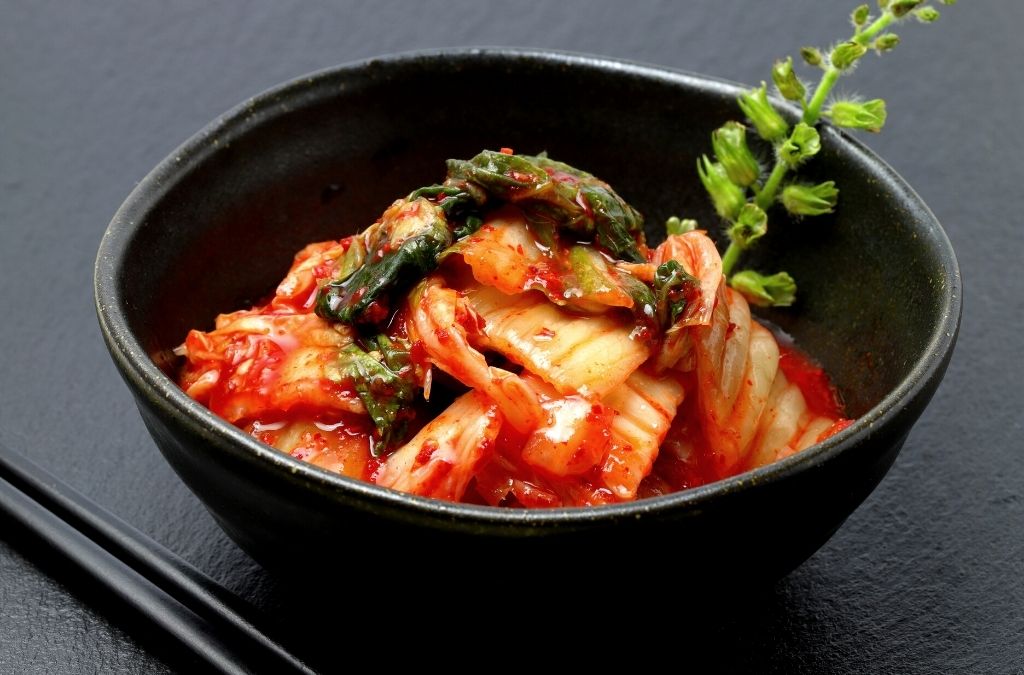If you’re like me, then you love spending time in the kitchen cooking up delicious meals for your friends and family. And if you’re also like me, then you probably want to find ways to preserve your harvest so you can enjoy those homegrown goodies all winter long! Fermenting food at home is a great way to do just that; it’s easy, and fun, and the results are always delicious. So if you’re looking for a new way to preserve your harvests this year, be sure to give fermentation a try!
Quick Content Navigation
What is Food Fermentation?
How does fermentation work?
Fermentation begins when the microorganisms are introduced to the food product. The microorganisms then begin to consume the carbohydrates in the food, and this process produces alcohol or organic acids. The type of alcohol or acid produced depends on the type of microorganisms used and the specific conditions of the fermentation process.
The alcohol or organic acid produced during fermentation acts as a preservative, which allows the food product to last longer before spoiling. Fermenting also produces other compounds that give fermented foods their unique flavors and textures.
Why should you ferment?
Fermenting food at home is a fun way to preserve your harvest, save money on groceries, and eat healthier foods. Fermented foods contain probiotics that help keep your gut healthy, and they are a great source of vitamins, minerals, and other nutrients. Fermenting food at home is easy to do and the results are always delicious!

What can you ferment?
Almost any type of food can be fermented, but some foods are better suited for fermentation than others. Fermentable foods include fruits, vegetables, grains, legumes, and dairy products. Some good examples of fermentable are the following;
- Fruits: apples, pears, bananas, strawberries, and raspberries.
- Vegetables that are great for fermentation include but are not limited to; cabbage, carrots, beets, onions, and garlic.
- Grains: rice, wheat, and barley.
- Legumes: include lentils, black beans, and chickpeas.
- Dairy products: milk, yogurt, and kefir.
Fermenting food at home is easy to do and there are so many options for what you can ferment that the results are always delicious!
Fermenting Food at Home Equipment I Need
What Fermenting Equipment Do I Need? If you want to ferment food at home, then there are some essential pieces of equipment that you will need. The type and amount of fermenting equipment needed depends on the types of fermented foods being produced and how much product is being made.
Fermentation vessels vary from small containers like jars or crocks to large tanks like vats or barrels. Fermentation can be done at room temperature or in a controlled environment such as an incubator (for bacteria) or freezer (for yeast).
Fermenting Equipment I need for fermenting food at home:
1. Fermenting Crock:
A fermenting crock is a special type of container that is designed for fermenting food. It has a watertight lid and a weight to keep the food submerged in the liquid.
2. Fermentation Lid:
A fermentation lid is an airlock that fits on top of a jar or bottle and allows gases to escape while keeping out contaminants.
3. Jars:
Fermented food can be stored in jars.
4. Bottles:
Fermented beverages can be stored in bottles.
5. Measuring Cup:
A measuring cup is needed to measure the ingredients for the recipe.
6. Scale:
A scale is needed to weigh the ingredients for the recipe.
7. Funnel:
A funnel is needed to transfer liquid into bottles or jars without spilling it all over the countertops and floors!
8. Thermometer:
A thermometer is needed to check the temperature of the fermentation vessel. Fermentation takes place at a specific temperature range and if it gets too hot or cold, then bacteria will die off before producing any alcohol or acidity.
9. Labels:
Labels are helpful for identifying the contents of a jar or bottle, especially if there are several different types of fermented food being stored in the fridge.
Listed below are the highest-rated tools, perfect for fermenting food. Check them out!
Easy Recipes for Food Fermentation at Home
There are endless possibilities for recipes when it comes to fermenting food at home, so get creative and have fun with it! Here are a few of my favorites:
Vegetable Fermentation
This is one of the easiest fermenting recipes and the results are always delicious. All you need is a jar of your favorite vegetables, some salt, and some water. Simply mix the vegetables, salt, and water together in a jar and let them sit at room temperature for a few days.
The longer they ferment, the sourer they will taste. Fermented vegetables make a great side dish or snack, and they also make a great addition to salads or soups.
Fruit Fermentation
Fermented fruit is a great way to add some sweetness to your diet while also getting the benefits of probiotics. Fermented fruit is easy to make and can be made with any type of fruit.
Simply chop up your favorite fruits, mix them with some sugar and water, and let them sit at room temperature for a few days. The longer they ferment, the sweeter they will taste. Fermented fruit makes a great dessert or addition to your breakfast yogurt.
Fermented fruit is also a great way to add some sweetness to your diet while also getting the benefits of probiotics.
Read also how to ferment wine.
Grain Fermentation
Fermenting grains is an easy way to get the nutrients from whole grains without all the carbs! You can make it with any type of grain and is easy to do.
Simply soak your grains in water overnight, drain them off the next day, and then add some salt and sugar before letting them sit at room temperature for a few days.
Dairy Fermentation
Fermented dairy products are a great way to add some probiotics to your diet. Simply mix the dairy product, salt, and sugar together in a jar and let them sit at room temperature for a few days. The longer they ferment, the sourer they will taste.
Moreover, a great addition to your breakfast or lunch, and they also make a great topping for smoothies or yogurt.
Tips In Fermenting Your Own at Home
Fermenting is a simple process that anyone can do at home with just a few supplies.
Choose the Right Fermenting Container for Your Needs
There are many different types of Fermenting Containers available, so you can find one that fits your needs and style. Some Fermenting Containers are made with glass, while others use plastic or stainless steel.
Choose the Right Fermenting Lids
Fermentation Lids come in a variety of shapes and sizes, so it is important to choose the right one for your Fermenting Container. Make sure to get a Fermentation Lid that fits well and will keep air out.
Ferment Your Food
Now that you have your Fermentation Container and Lid, it’s time to start fermenting! Simply chop up your fresh food into small pieces, place it in the Fermenting Container, and add some of the Fermentation Lids.
That’s all there is to it! Fermentation is a simple process that anyone can do at home with just a few supplies.
FAQs About Food Fermentation
Is Fermentation healthy?
Yes! Fermented foods contain probiotics that help keep your gut healthy, and they are a great source of vitamins, minerals, and other nutrients. Fermenting food at home is easy to do and the results are always delicious!
Is Fermenting safe?
Fermentation is a natural process that has been done for thousands of years. It’s safe if you follow the same steps each time and avoid using Fermented food that has gone bad.
How long does it take?
Fermentation takes anywhere from two days to six months, depending on what type of Fermenting Container you use and how much time you have. For instance: Fermenting Fruit will take less time than Fermenting Vegetables.
What if I don’t like it?
Fermenting can take some getting used to, but once you get the hang of it you will love all of your Fermented foods. Fermentation creates a unique flavor that some people may not be used to, so it is important for Fermenters to experiment with different Fermented foods until they find one that suits their tastes. Fermenting food at home is easy to do and the results are always delicious!
What if I don’t have room in my house?
Fermentation takes up very little space, so you can Ferment food in any room of your house.

Conclusion
Fermenting food at home is a great way to improve your family’s health, save money, and connect with your food. We hope this guide has given you the information you need to get started fermenting food at home. If you have any questions or comments, please let us know in the comments section below. Happy fermenting!
For more preserving tips, check out our recent post-Top 5 Vegetable Dehydrators: Veggie Chips, Crackers & Fruit Roll-ups











 Hi! I’m Sally-Anne!
Hi! I’m Sally-Anne!